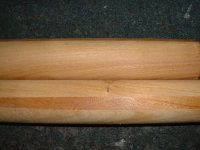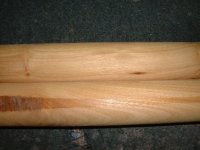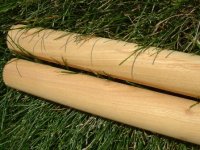In the south we called them 'horse-apple' trees, (because of the big green fruits they make) but i guess a more proper name is Osage Orange.
Osage Orange wood is one of the hardest and most decay resistant woods in the U.S. It was regularly used by natives for bows, and the early settlers (before barbed-wire) planted them all over the country as living fences.
In fact, this tree can now be found growing wild in many states because of the early settlers, otherwise it is only native to the Oklahoma area.
As hard a wood as it is, I'm wondering if anyone has ever experimented with it for making cues?
Osage Orange wood is one of the hardest and most decay resistant woods in the U.S. It was regularly used by natives for bows, and the early settlers (before barbed-wire) planted them all over the country as living fences.
In fact, this tree can now be found growing wild in many states because of the early settlers, otherwise it is only native to the Oklahoma area.
As hard a wood as it is, I'm wondering if anyone has ever experimented with it for making cues?




